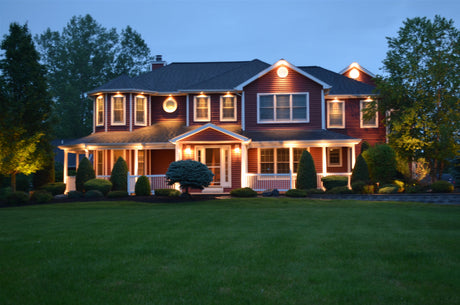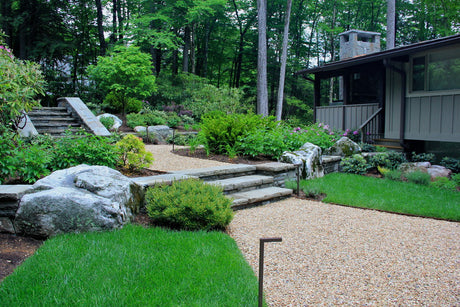
Landscape lighting not only enhances the aesthetic appeal of your property but also increases safety and security. However, maintaining these systems is crucial to ensure they continue to function effectively and efficiently throughout the year. This article serves as your comprehensive guide for the upkeep of your landscape lighting in 2024, detailing the threats to these systems and providing a professional checklist to help you manage maintenance tasks.
What Harms Landscape Lighting
Several external factors can impair the performance and longevity of landscape lighting:
- Weather conditions pose the most frequent threat. Rain, snow, and even sun can deteriorate fixtures over time, with moisture potentially leading to corrosion and electrical issues. Similarly, extreme temperatures, both hot and cold, can stress the materials used in your lighting fixtures, causing them to expand, contract, and eventually wear out.
- The physical environment may also contribute to the wear and tear of landscape lighting. For instance, soil movement can displace underground wiring, while lawn care activities like mowing or trimming can inadvertently damage exposed fixtures. Even the natural growth of plants can encroach on light paths or physically obstruct fixtures, diminishing their effectiveness.
- Wildlife and pests can wreak havoc on landscape lighting. From squirrels gnawing on wires to insects nesting in fixtures, the natural fauna around your home can cause unexpected disruptions to your lighting system.
- Destruction from the natural environment

Professional Maintenance Checklist
To combat the challenges posed by environmental and physical threats, a thorough and systematic approach to maintenance is essential. Here is a professional maintenance checklist that covers all critical aspects:
1.Regular Cleaning
Dust, dirt, and debris can accumulate on light fixtures, which can obstruct light output and diminish their appearance. Clean your fixtures bi-monthly with a soft cloth and a mild detergent solution to ensure optimal light quality and efficiency.
2.Inspect for Water Damage
After any significant rainfall or snow, inspect fixtures for water ingress. Any accumulation of moisture can lead to electrical failures. Ensure all seals are intact and replace any damaged fixtures promptly.
3.Check and Replace Bulbs
Regularly check all bulbs for functionality. Replace burnt-out or dimming bulbs immediately to maintain consistent light quality. Consider switching to LED bulbs if you haven't already, as they offer longer life spans and better energy efficiency.
4.Wire Management
Inspect all visible wiring for signs of wear or damage, such as fraying or chew marks from pests. Bury exposed wires deeper into the ground to protect them from damage and ensure they are covered with a protective sheath to prevent deterioration from the elements.
5.Adjust Fixtures
As plants grow, they can shift the direction or block the light emitted by your fixtures. Regularly adjust the positioning of your lights to ensure they fulfill their intended purpose, enhancing your landscape's features effectively.
6.Test Automation Systems
If your landscape lighting is controlled by timers or other automation systems, test these regularly to ensure they are functioning correctly. Update the settings according to the season to adapt to the changing daylight hours.
7.Professional Inspection
At least once a year, have a professional conduct a thorough inspection and servicing of your landscape lighting system. They can identify issues that may not be evident to the untrained eye and ensure that your system is in top condition.
Regular maintenance
Final Words
Regular maintenance not only prolongs the life of your lighting system but also enhances the safety, security, and enjoyment of your outdoor spaces. Make 2024 the year you prioritize the care of your landscape lighting, and enjoy the illuminated beauty of your property without interruption.
Enjoy the illuminated beauty of your property without interruption.










